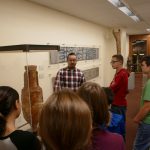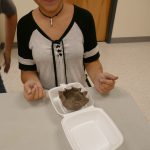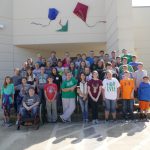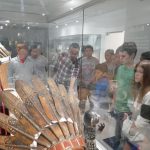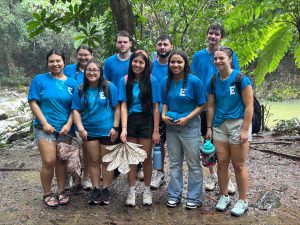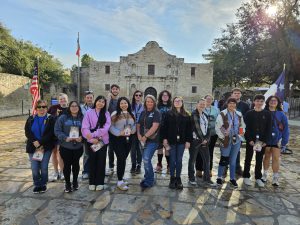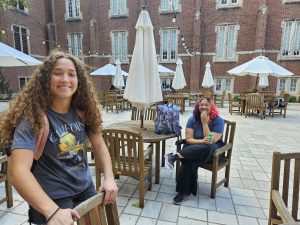Seventh grade students from Rattan recently explored The Museum of the Red River in Idabel. The Museum is home to 30,000 cultural objects from six continents, and Oklahoma’s State Dinosaur, Acrocanthosaurus atokensis. Its exhibition program includes temporary and permanent displays, with the majority using objects drawn from its collections.
The museum is hosting the exhibit Arts of the Pacific Northwest. The art of the Northwest Coast typically consists of highly stylized designs that represent people, animals or supernatural beings. The art style usually centers around form lines—lines of varying width used to delineate design fields. These design fields themselves are often rectangular with rounded corners or ovoid. These ovoids are typically used to circumscribe animal parts. However, many sculpted objects, like bowls, often take on an overall ovoid form. In fact, Northwest Coast sculptures are highly elaborate, and feature works in wood, bone, horn and other materials. Many of the objects are meant to be viewed from different angles and in motion.
Students also enjoyed the Andean Textiles exhibit. Cloth production in the Andes mountain region of Peru, Bolivia and northern Chile dates back to at least 2,500 B.C. During this time, textiles were made from various vegetal fibers like cotton. However, by 1,500 B.C., animal fibers—lama, alpaca, and other American camelids—were in general use. Other materials like bast (inner tree bark fibers) and other similarly tough materials were used for cordage (string, rope) and netting. Human hair was also used, albeit rarely, to make fine cordage for masks and effigies.
Rattan students also viewed objects up close that date back hundreds of years—some as far as 300 BC such as pottery, canoes, clothes, a baby cradle, arrowheads, and baskets from both modern and BC times. They were given a behind the scenes tour of the area where many of the 33,000 objects housed in the museum are stored including the museum’s dinosaur.
Following the tour, students participated in an art class and created their own clay pots.
The field trip was sponsored by Eastern Oklahoma State College GEAR UP. Participating schools take two field trips each academic year—one to tour a college or university and one that is cultural/educational in nature. In 2017, Eastern received a $17 million federal GEAR UP grant and serves over 3,000 students in 39 area schools.

